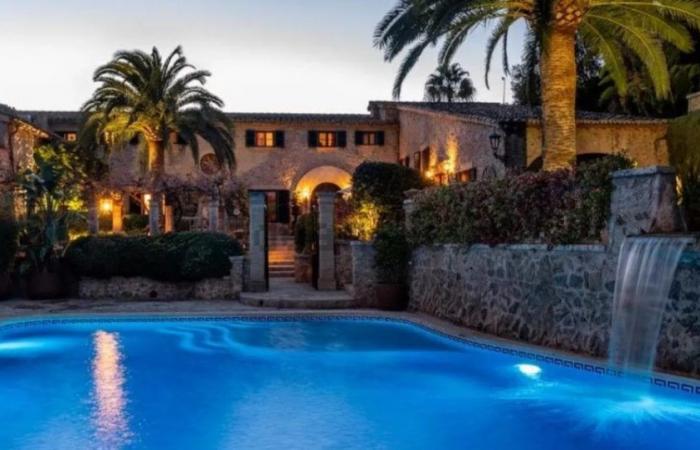Prices of luxury homes in Italy grew by 2.2% in April, compared to last year. An increase that was higher than that recorded by the values of the residential market as a whole (+1.7%). This is according to a study carried out by idealista, the leading portal for technological development in Italy.
Gorizia is the province where the increase in prices of luxury homes (which represent 10% of the real estate stock) reaches its coldest point (16.5%). Followed by the provinces of Pescara (14.7%), Fermo (12.1%) and Brindisi (11.1%), all with double-digit increases. In the province of Milan there was an increase of 3.3%, while the increases were more limited in Rome and Naples (0.8% and 1.4% respectively). Only in 16 provinces out of 106 monitored, the price of homes in the highest range decreased: Rimini (-6.4%), Terni (-4.8%) and Oristano (-2.5%) recorded the greatest drops.
In relation to the overall trend of market prices, the most expensive houses recorded a growth higher than the market trend in 71 out of 106 provinces. The largest gaps were recorded in Gorizia, where the market fell by 1.4%. while the 90th percentile market grew 16.5%. In the province of Pescara (-2.1% of the market and 14.5% of the 90th percentile), Syracuse (-5% of the market and 7.3% of the 90th percentile), Lecco (-5.4% of the market and 4.8% of the 90th percentile), Trapani (-0.2% and 9.8% of the 90th percentile).
In the province of Milan the market price fell by 0.3%, while the most exclusive market segment increased by 3.3%; in the province of Rome the market recorded a decline of 0.5%, while the most expensive houses recorded an increase of 0.8%.
On the opposite side, there are 33 cases of markets in which the price trend of luxury homes is slower than in the “standard” market. In Grosseto, the gap is particularly evident: homes saw an increase of 11.1%, while those located in the 90th percentile recorded a slight decrease of 0.3% compared to May last year. Followed by Terni (with a growth of 4.8% in the market and a decline of 4.8% in the 90th percentile), Benevento (6.9% in the market and -1.8% in the 90th percentile) and Salerno (7 .5% in the market and a 0.6% decline in the 90th percentile).
Capitals
In the capital cities analysed, the prices of high-end homes increased in 65% of cases. Ferrara and Brindisi stand out for the largest annual increases, of 10.2% and 9.2% respectively. Followed by Sassari, Bergamo and Catania with increases of 8.4%, 7.6% and 7.4%. Among large markets, Milan recorded a modest increase of 2%, while Naples recorded an increase of 4.5%. Rome, however, saw a slight decline of 0.8%. Turin, among the main capitals, recorded the most significant growth in the high-end segment, with an increase of 4.9%.
Conversely, in 29 capital cities, the price of homes in the 90th percentile decreased. The most marked drops were recorded in Perugia (-11%), Bolzano (-7%) and Cuneo (-6.8%).
As regards the relationship with the rest of the market, the capitals where the highest segment has grown more than the rest of the market are 49 out of 90 cities monitored. The most significant difference is found in Ragusa, with a reduction of 4.6% in the market and an increase of 3.6% in the highest segment, followed by Salerno (-2.4% of the market and 8.1% of the 90th percentile) and Messina (-1.2% of the market and 6.8% of the 90th percentile)
Milan, where the market has remained stable over the last year, saw the prestige segment grow by 2%. In contrast, Rome saw growth of 0.4% in the overall market, but a decline of 0.8% in the 90th percentile.
In addition to the capital, 39 other markets have seen the gap between the market and the luxury segment narrow in the last 12 months. Among these, Perugia presents the greatest differential, with the general market increasing by 3.3% while homes in the 90th percentile decreased by 11%. Other notable cases include Barletta, where the market grew by 14% and the 90th percentile by 3%, and Asti, with a 7.5% increase in the overall market but a 1.2% decrease in the highest segment. Finally, in Bolzano the market saw a marginal increase of 0.3%, while in the 90th percentile segment it fell by 7%.
Methodology
To carry out this study, the idealista team compared the price per square meter in April 2023 and 2024, using the same sample used for the idealista House Price Index, but focusing the analysis on the 90th percentile of each market analyzed.
Table with data for all capitals available on the next page
Data collected and analyzed by idealista/data, idealista’s proptech technology that provides information to professional audiences to facilitate strategic decision making, both in Spain, Italy and Portugal. It uses all the parameters of the idealista database in each country, as well as other public and private data sources to offer valuation, investment, acquisition and market analysis services.






